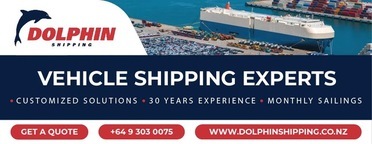Fines for missing targets

Carmakers will have to sharply increase sales of battery electric vehicles (BEVs) and hybrids for them to hit 2025 EU targets for CO2 emissions.
That’s according to a report from analyst company Dataforce in the wake of “market scepticism”.
Next year’s fleet average for new vehicles sold in the EU will be 93.6 grams of CO2/km compared with 116g/km that came into effect in 2021.
Each marque has its own target based on average mass of its fleet, which means companies such as Mercedes-Benz and BMW that sell large SUVs have higher targets than brands that sell mostly smaller cars with smaller engines and lower CO2 emissions, such as Dacia or Citroen.
The EU will fine brands that miss their goal €95 per car per gram over the target. Of the major automotive groups in Europe, only Geely and Tesla are already below their 2025 targets.
Tesla has no problem meeting its target because it only sells BEVs while Geely is helped by its Volvo brand, which sells high numbers of fully electric models.
Toyota, which sells low numbers of BEVs but a large number of low-emissions hybrids, is the closest to its 2025 target. Ford and the Volkswagen Group face the biggest gap, according to Dataforce.
Oliver Blume, VW’s chief executive officer, said earlier this year that the EU should adjust the targets because of the slowdown in BEV sales. He added VW could join an emissions pool with a more-efficient marque to lower its fleet emissions. BMW and Renault have also called for reviews.
The fastest route to compliance would be to increase sales of fully electric cars, but the EV market has cooled substantially this year following the withdrawal of incentives in big markets, especially Germany, and consumer resistance to pay higher prices for electric cars.
The market share of BEVs in Europe has fallen to 13.3 per cent in the first half of this year from 13.8 per cent in the same period in 2023, reports Dataforce.
Automakers have also been preparing for the targets by increasing sales of hybrids as well as continuing to push PHEVs, which have held onto most of their market shares this year despite being seen as a costly transition technology.
In the first half of this year, the overall European market was up by 4.3 per cent, or by 234,000 units, with half of the new volume coming from full hybrids.
“BEVs and PHEVs offer the greatest reduction potential, but subsidy cuts have hindered their transition to the volume market,” says Dataforce said in its report.
PHEV sales are expected to cool sharply, especially as the EU pushes greater scrutiny of the utility factor, or the percentage of time a plug-in hybrid operates in full electric mode. On-board real-life monitoring has found they run on the combustion engine more than emissions certification tests predict.
An analysis in April based on 2023’s sales mix by environmental advocacy group Transport & Environment found carmakers would need to increase EV market share to 24 per cent, while increased sales of hybrids could drop that figure to about 18 per cent.
Dataforce says a brand without full hybrids in its portfolio would need to sell 37 per cent BEVs and PHEVs, but a marque selling 55 per cent full hybrids could reduce that figure to 23 per cent.
Aside from manipulating their own powertrain offerings – for example, by pulling high-emissions models off the market – carmakers can focus on lowering the entry cost of EVs through inexpensive LFP battery technology and scaling up production.
This has been made more complicated with the EU’s extra tariffs on Chinese-built EVs, but a number of EVs made in Europe with a base price of €25,000 or less are launching this year. These include the Renault 5 and Citroen’s E-C3, reports Automotive News.
That will have an impact on the cost of models with internal combustion engines. Dataforce analyst Benjamin Kibies adds: “Buyers must prepare for price hikes on petrol and diesel cars, while BEVs will become more affordable with the introduction of new models.”





